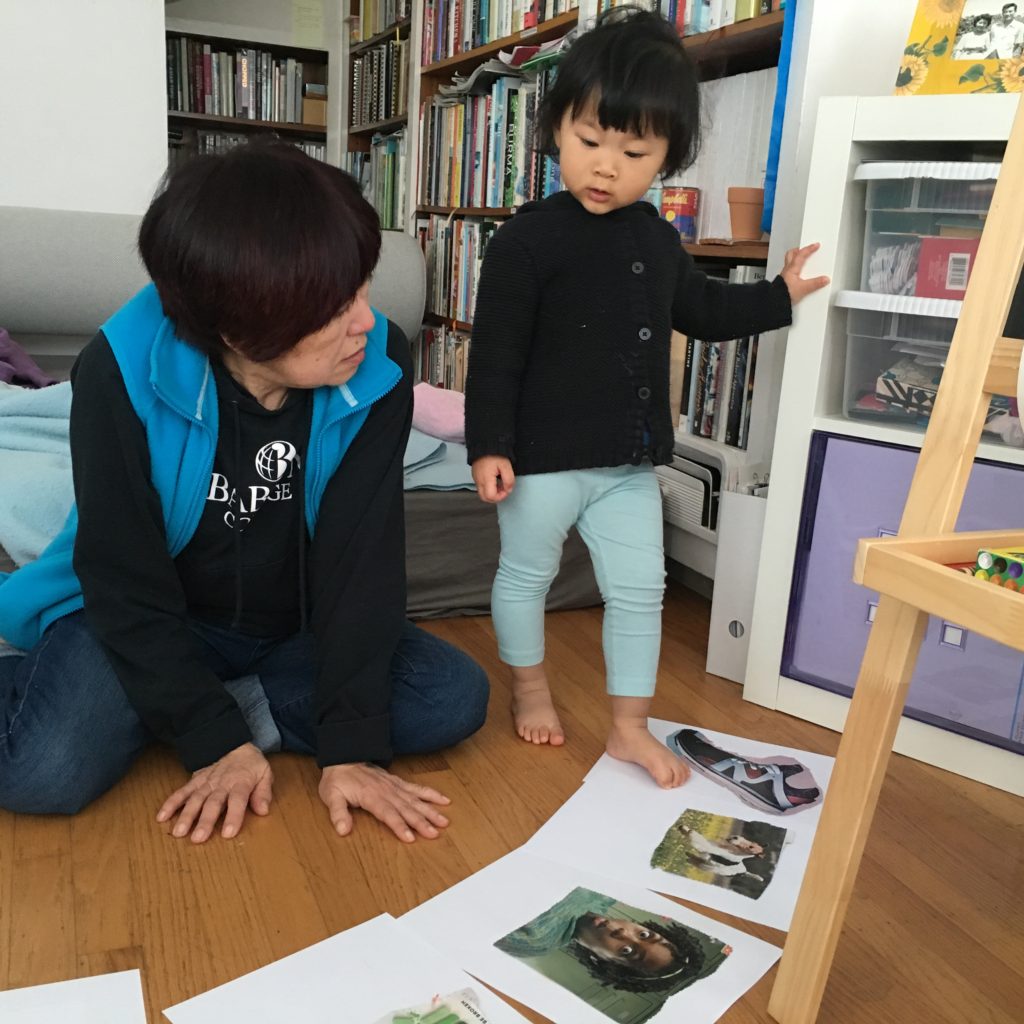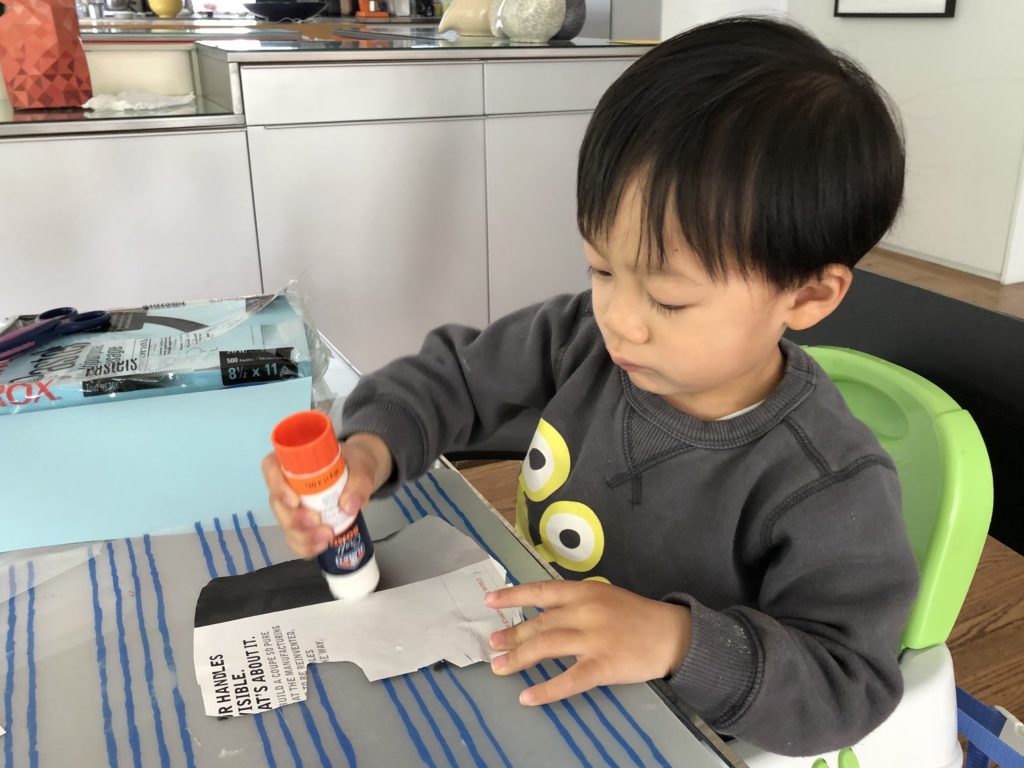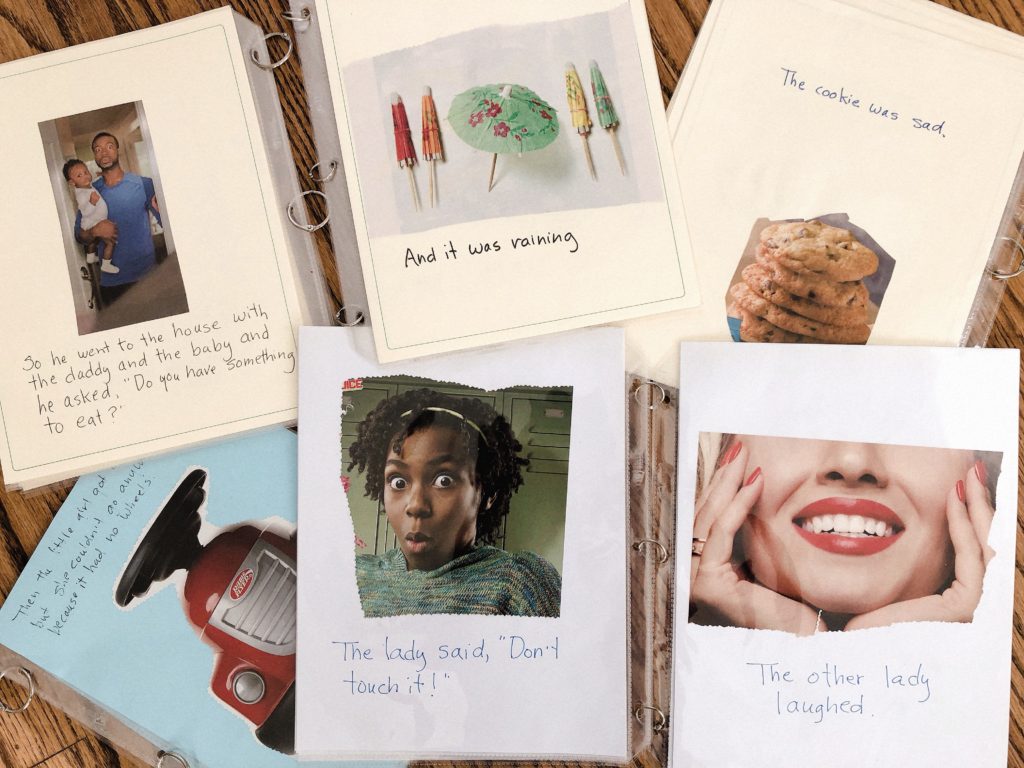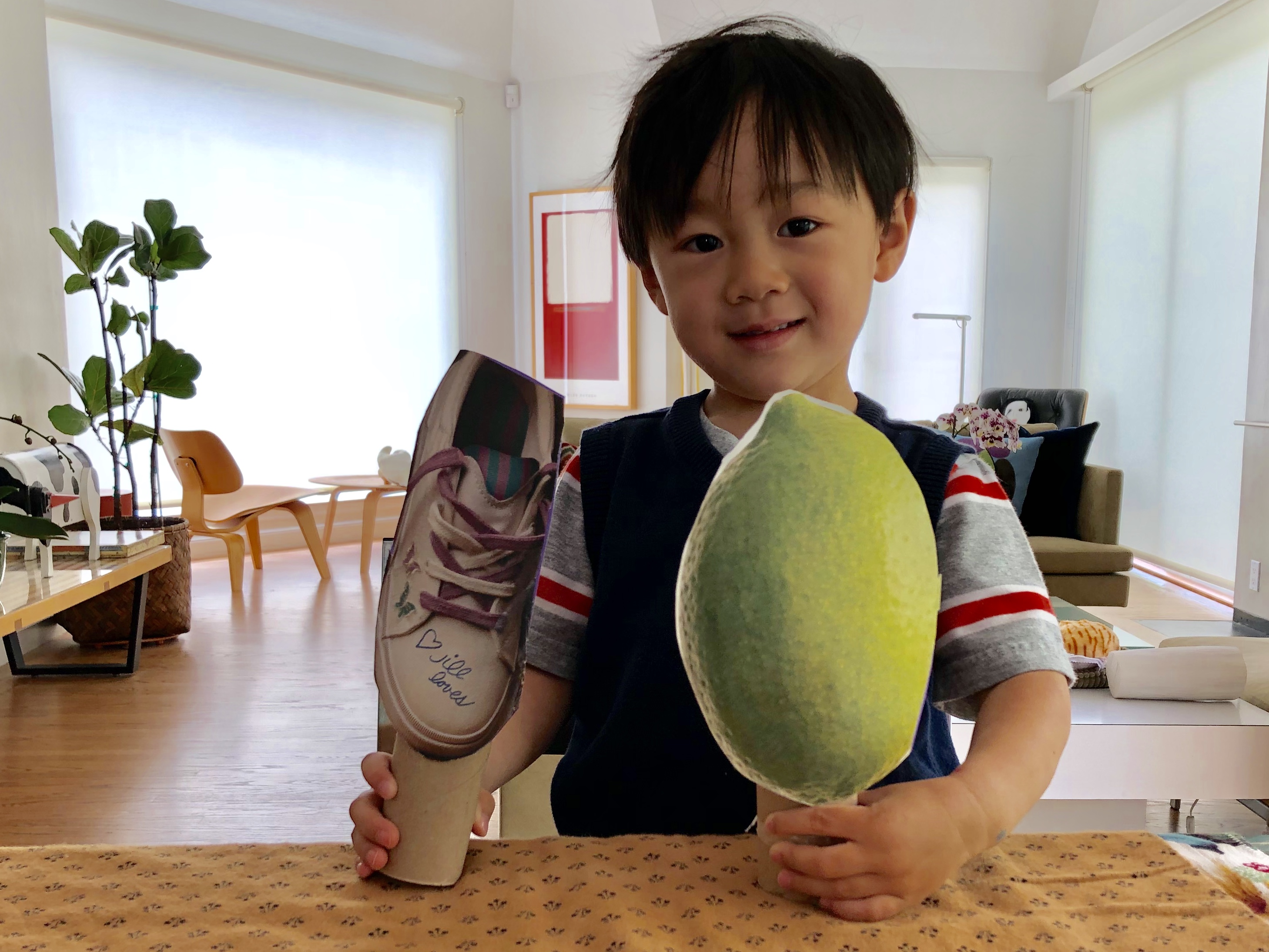How to Make a Book with your Grandchild

I value imagination and creativity. I admire a nimble mind that can leap from thought to thought and create connections. Trying to hone such attributes in grandkids as young as three, I decided to teach them how to make a simple book.
Since the point of the exercise is to train the mind, quantity is better than quality. The resulting books are not showpieces–they are more like exercise books. Still, they are hugely satisfying for the child to complete and they take pride in authorship.
What you Need to Make a Simple Book
- 8 1/2- X 11-inch paper
- Magazine images (try to find a variety to give the child options) or find images online and print them in color
- Child’s safety scissors
- Glue stick
- Plastic sheet protectors
- Binder rings
- Fine-point Sharpie to write the story

How to Make the Book
- Work with your child to select the images.
- Have the child cut out the images and glue them to paper, one image per sheet.
- Help the child to create a story around the images, shuffling the order of images until a (somewhat) coherent story is formulated. If the story goes off the rails, just let it. This is the child’s story and it can be whatever they want it to be.
- Once the child decides on the order of the images and has the story structure worked out, write the appropriate words on the pages, as narrated by the child.
- Put the pages in the right order in the plastic sheet protectors, filling each sheet protector with two pages; one for the front and one for the back.
- Add a title page and and an author’s byline. The child may wish to decorate the title page.
- Secure the pages with the binder rings.
- Read back the story to your child. They may want to “read” the story to you!

Instead of using the magazine images to make a book, you can also turn them into puppets.
Notes:
- Lay down something to protect the work surface when children are using a glue stick. I use old plastic placemats that can be wiped clean afterwards.
- Usually, magazine ad photos are punchier and more eye-catching to a child than the editorial photos.
- If you don’t subscribe to print copies of magazines and only access them online, find images on the Internet, through such search engines as Google Images.
- I like to start every story with, “Once upon a time, there was…” because it gets the child into a story mode. It gives the child time to think about who the main character will be, helps them to focus, and gives them a starting point for the story.
Some Sample Stories
Master N, almost three, wrote this one:
The Girl and the Car
Once upon a time, there were some strawberries. A little girl ate the strawberries. Then the little girl wanted to eat the brownies. She ate the brownies and shared with Bernice (his friend from day care). Then the girl got in her car (picture of a child-size drivable car). But she couldn’t go anywhere because it had no wheels (he had cut the tires off the car by accident). So her mommy bought her a big car (picture of a real-life car)! The end.
Miss T, when she was four years old, wrote this one, with a little thematic guidance from Grandma:
The Spoon
Once there was a spoon who was hungry. He was sad. So he went to the house with the daddy and the baby and he asked, “Do you have something to eat?” Then the daddy gave him a hot dog. And he couldn’t eat it with his spoon.
So, he went to the wolf and he asked, “Do you have something for me to eat?” And the wolf told him to eat the chickens! But the chickens said, “No! No!” So the spoon said, “Okay, I won’t eat you.”
And the spoon went to the butterfly lady. The spoon asked the butterfly lady, “Do you have something to eat?” The butterfly lady said, “I don’t have anything for you to eat.” So she sent him to the man and his child.
The man gave the spoon some lasagne. And the spoon could eat it. So he called his friends, the fork and the knife. And they all ate the lasagne together! The end.
What Children Learn from this Activity
- How to use their imagination to create a story
- How to connect ideas as they link one image to another, to make a coherent whole
- An increased interest in reading or pretending to read
- Reinforcing a love of books
- Cutting and pasting skills
- Pride in having authored their own books

These homemade books are adorable and look fun to make. I have a four-year old granddaughter and I think she would LOVE to create her own books.
Thanks for your comment, Suzanne. They are fun. And afterwards, since the kids know the story they concocted themselves, they enjoy “reading” their books back to you!
Another thing would be to make the text a simple, repeating pattern, such as “Grandma loves (me)”, or the child’s name under a picture of grandma. This increases knowledge of how words go together, allows for short attention spans, gives visual recognition to the child’s name, and, can be used as the child gets older to teach sight words. It’s never too soon to build those good reading skills! Adding them to a book that shows love every time it’s read aloud is doubly special!
This is brilliant! Thanks a million for sharing your insights. I love your idea of using short, repetitive text to teach sight words early on. This is an invaluable addition to the basic idea that I will try when we make our next book. I really appreciate that you took the time to comment.